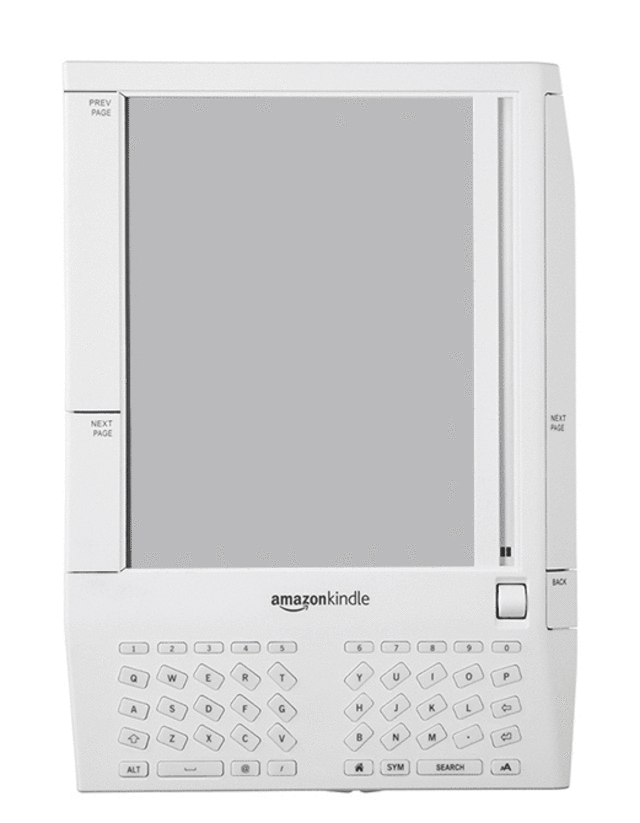No gadget gives me as much pleasure to pick up as we Kindle Paperwhite. I’m hard pressed to think of a device That is better designed it to one thing well: read digital books. But what makes the Kindle unique to me as a product Is That it is one of the few modern devices That has used the ideals of simplicity that improve with each iteration.
With each successive generation, the Kindle has shed unnecessary buttons and features, in endless pursuit of Dieter Rams’s 10 Principles of Good Design. But it was not always this way. Need proof? The GIF below, assembled by Gadgetlove, shows off the Kindle’s remarkable evolution over time.

When the Kindle was first released in 2007, it was sort of grotesque. It featured a half-dozen different buttons for navigating an e-book, a chiclet keyboard bizarre That looked like it was designed by a Surrealist, and a weird kitchen-sink approach is its feature set: for example, you could store and play MP3s on the first-generation Kindle by loading them up through an SD slot. It was a total hodge podge.
But the 2009 release of the Kindle 2 made the device’s keyboard more conventional, ditched the SD card slot (which was mostly there for the extraneous purpose of playing MP3s), and offered a slimmer, lighter footprint. In 2011, the Kindle 4 abandoned the chiclet keyboard in exchange for four face buttons and a D-pad, while the Kindle Touch (released the same year) ditched entirely physical controls for a touchscreen. And in 2012 came the Kindle Paperwhite, Whose slimmer and lighter forms basically perfected the e-reader while still offering plenty of technological improvements, dry as a sharper, backlit display.
When we talk about Apple, the often talk about how indebted the company is a Dieter Rams and his 10 Principles of Good Design. But I’d argue That over the years, Amazon and its Lab 126 design team have learned that subscribe this Rams’s Principles just as much with the Kindle e-reader.
Here’s how the Kindle stacks up against the Rams’s criteria for good design:
1. Good design is innovative. Not only has the push to make the Kindle thinner and lighter than ever before improved the product, but Amazon Manages introduce a more useful software features to the Kindle line-up, dry as X-Ray, without detracting from the simplicity of the hardware.
2. Good design is useful. It not only Allows people to easily read digital books, but can fit thousands of them into the size of these very thin book.
3. Good design is aesthetic. The Kindle Paperwhite, in particular I is beautiful in its simplicity: it is as close to the design of the page as possible.
4. Good design is understandable. The only device it easier figure out how to use is a book.
5. Good design is unobtrusive. While the Kindle hardware used to be imposing, Amazon’s design team has streamlined it with every iteration. The device fades into the background, giving full sway content.
6. Good design is honest. The Kindle could have unnecessary features like a color e-ink screen, but the the Kindle is not more innovative, powerful, or valuable than it really needs to be. It’s entirely unpretentious.
7. Good design is long-lasting. I know people still using Their original Kindles from 2007 Its design is neither fashionable or unfashionable, and a Kindle from four years ago still holds up against a Kindle purchased today.
8. Good design is thorough down to the last detail. The first generation Kindle Paperwhite might not be as thorough down to every detail as Dieter Rams would have liked it to be: the last generation Paperwhite, for example, was plagued by some uneven lighting issues. But Amazon has worked remedy That is the problem with last year’s hardware refresh.
9. Good design is environmentally friendly. Much Of That environmental friendliness comes simply from giving book publishers an alternative to chopping down trees; According To some estimates, the Kindle pays for its own environmental footprint Compared To physical books by the 23rd volume read.
10. Good design is as little design as possible. Again, just look at the GIF above. Every iteration, Amazon has focused on less but better, concentrating on the essential aspects of the Kindle experience, and stripping out the non-essentials. All prince at a point almost anyone can afford.
No wonder I love my Kindle so. It’s a triumph of iterative design. While the iPhone is Proof That design can be aesthetically perfect, the Kindle promises something Which, to me, is far more beautiful: that design can learn from its mistakes and be perfected .
No comments:
Post a Comment